When renovating your bathroom, it’s easy to get overwhelmed by the thousands of choices you need to make, from flooring to sinks. To help make your next renovation easier, this guide will cover the major elements of a bathroom and offer recommendations for what to look for based on your style and budget.
Choosing Floor Tiles
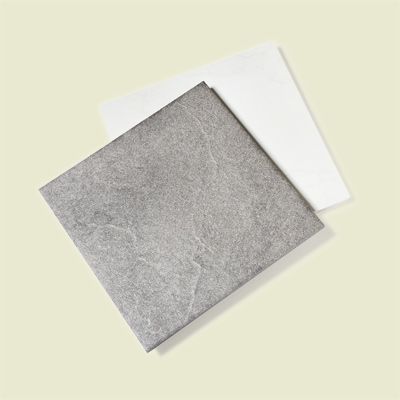
Several factors, such as durability, maintenance ease, and appearance, can influence your choice of bathroom tiles. Here are the most common types of bathroom tiles and why you might choose them.
- Ceramic tiles: Ceramic is a popular choice for bathrooms due to its affordability and durability. Available in a wide range of colors, patterns, and sizes, ceramic tiles can be used on floors, walls, and countertops. Ceramic tiles are resistant to water and relatively easy to maintain, making them an ideal option for budget-conscious homeowners looking for practical yet stylish solutions.
- Porcelain tiles: Porcelain is denser and less porous than ceramic tiles, making them ideal for wet areas like showers and bathroom floors. Porcelain also comes in a variety of finishes, including options that mimic natural stone or wood, offering a durable and elegant look that withstands wear and tear over time. However, these tiles are significantly more expensive than their ceramic counterparts.
- Natural stone tiles: Marble, slate, and granite tiles offer a luxurious, high-end look. Though they require more maintenance, including regular sealing, these tiles are incredibly durable and can last for many years while providing an elegant, one-of-a-kind appearance to bathroom spaces.
- Vinyl tiles: Vinyl is cheap and easy to install, often as simple as peel-and-stick. While it’s not as attractive as traditional tiles, vinyl is completely resistant to moisture, making it well-suited for bathroom floors and walls.
- Mosaic tiles: Mosaics are small and customizable, often used to create intricate designs, patterns, and textures in bathrooms. Their many grout lines offer better slip resistance, making them ideal for shower floors and wet areas. Mosaic tiles provide visual interest and a unique design statement in feature walls or backsplashes.
- Cement tiles: These tiles are known for their bold, striking patterns and durability, making them a popular choice for statement floors or walls in bathrooms. While thick and long-lasting, cement tiles often feature a handmade appeal, offering a rustic, artisanal quality that adds character and charm to bathroom designs.
As you look through your options, we often recommend opting for low-maintenance porcelain or ceramic tiles because they are non-porous, resistant to stains, and easy to clean. Avoid porous natural stone tiles like limestone, which can absorb spills and become stained over time unless sealed regularly.
For a bathroom renovation, we also highly recommend focusing on creating nonslip surfaces. Select tiles with textured surfaces, matte finishes, or sand-containing glazes, as they offer better traction and reduce the risk of slips and falls in wet areas. Another effective option is to use small tiles with numerous grout lines, as they provide better grip than large tiles.
How To Select the Right Caulk

For a bathroom renovation, it is typically best to use silicone-based caulk because of its superior water resistance and flexibility. Silicone caulk is waterproof, mold- and mildew-resistant, and can withstand constant exposure to moisture, making it ideal for sealing areas around bathtubs, showers, sinks, and other fixtures in the bathroom. It adheres well to non-porous surfaces like tile, glass, and metal, providing a long-lasting, durable seal in high-moisture environments.
Here are some helpful tips when you’re shopping for caulk for your bathroom project.
- Look for caulks specifically rated for kitchen and bath use. These are more resistant to moisture and temperature changes.
- Ensure the caulk contains a mildewcide that offers protection for five years or longer to prevent mold and mildew growth.
- Opt for an acrylic or hybrid formula that can be removed without harsh chemicals, making future replacement easier.
- Select a color that matches or complements your tile and grout for a seamless look.
Shopping Tips for Toilets
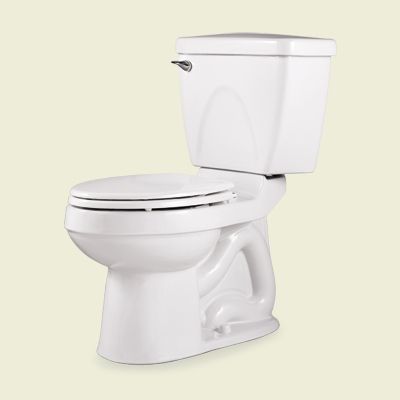
The right toilet for your bathroom renovation project depends heavily on your personal preferences and style. Keep the following factors in mind when shopping for a new toilet:
- Comfort: Evaluate factors such as bowl shape (elongated or round) and height (standard or comfort height) to make sure the toilet meets your needs.
- Flushing power: Look for toilets with a maximum performance score (MaP) of 500 or higher. This rating indicates the toilet’s ability to effectively clear waste with a single flush.
- Water efficiency: Choose a WaterSense-rated toilet, which uses at least 20% less water than the federal standard of 1.6 gallons per flush.
RELATED: How to Install a New Toilet
Sinks, Storage, and Workspace Options
Sink and vanity combinations balance functionality and style in your bathroom. Several styles are available, each providing unique benefits. Here’s an overview of the popular sink and vanity options.
Pedestal Sink
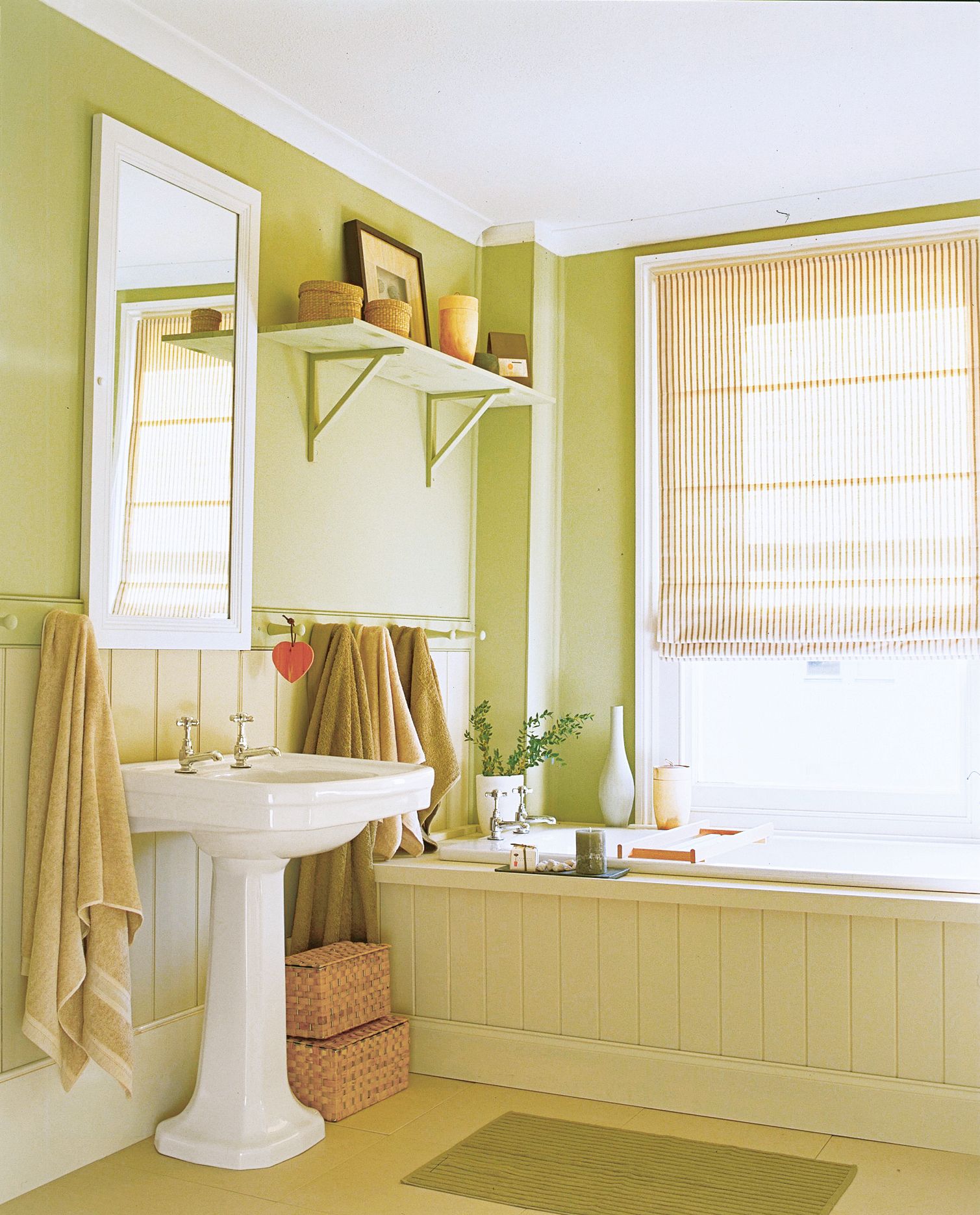
A pedestal sink is an excellent choice for small bathrooms or powder rooms where space is at a premium. It offers a sleek, classic look and is easy to clean, making it a stylish and practical option. However, it provides minimal storage and counter space, with no hidden storage to tuck away bathroom essentials.
Vessel Sink
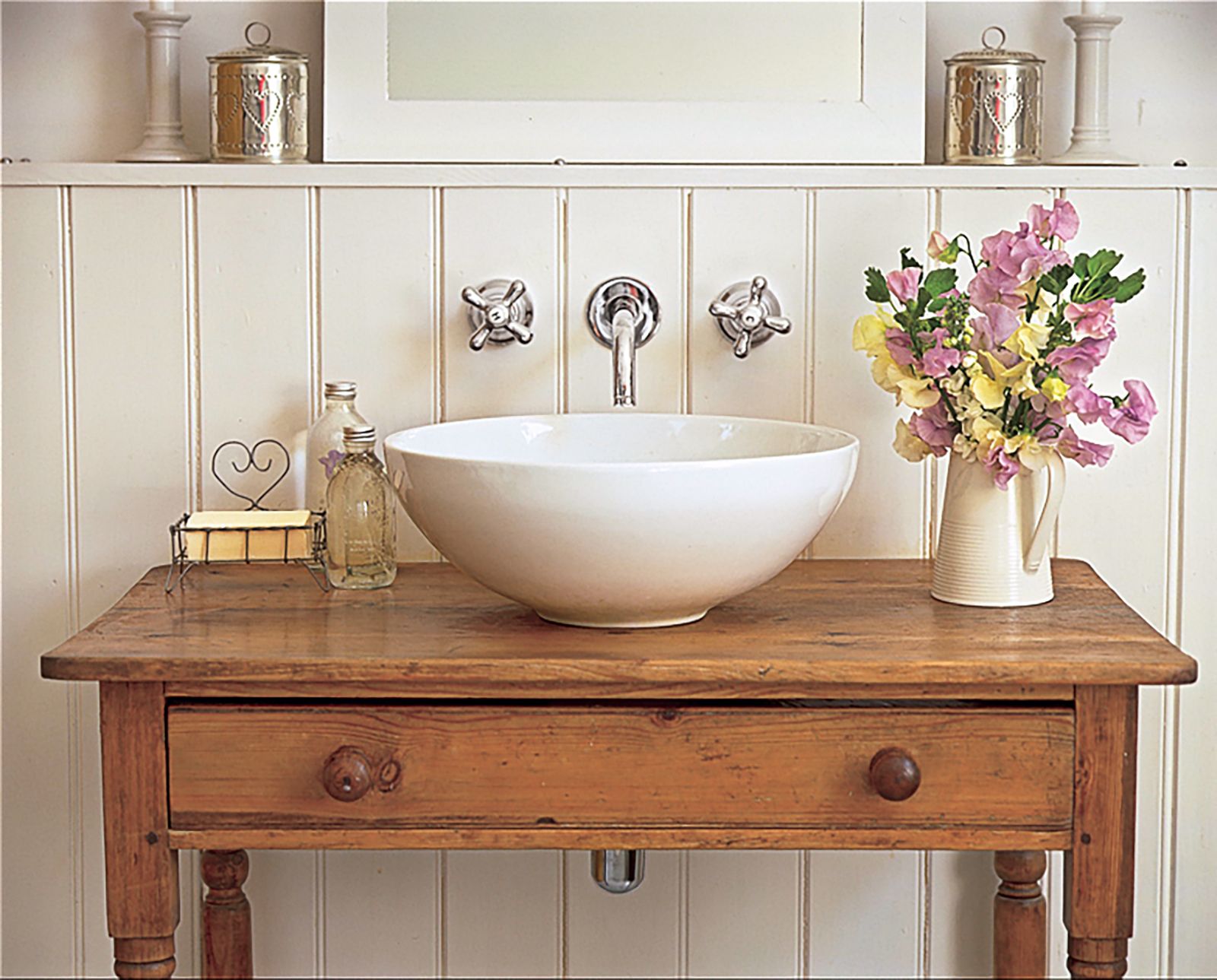
A vessel sink sits above the counter, creating a striking focal point in your bathroom and offering unique design possibilities. It provides more drawer and storage space beneath the sink, and there’s a wide variety of materials and designs. However, it does come with some trade-offs, including less usable counter space, more challenging cleaning around the base, and the potential need for a special faucet or mounting system.
Vanity With Sink
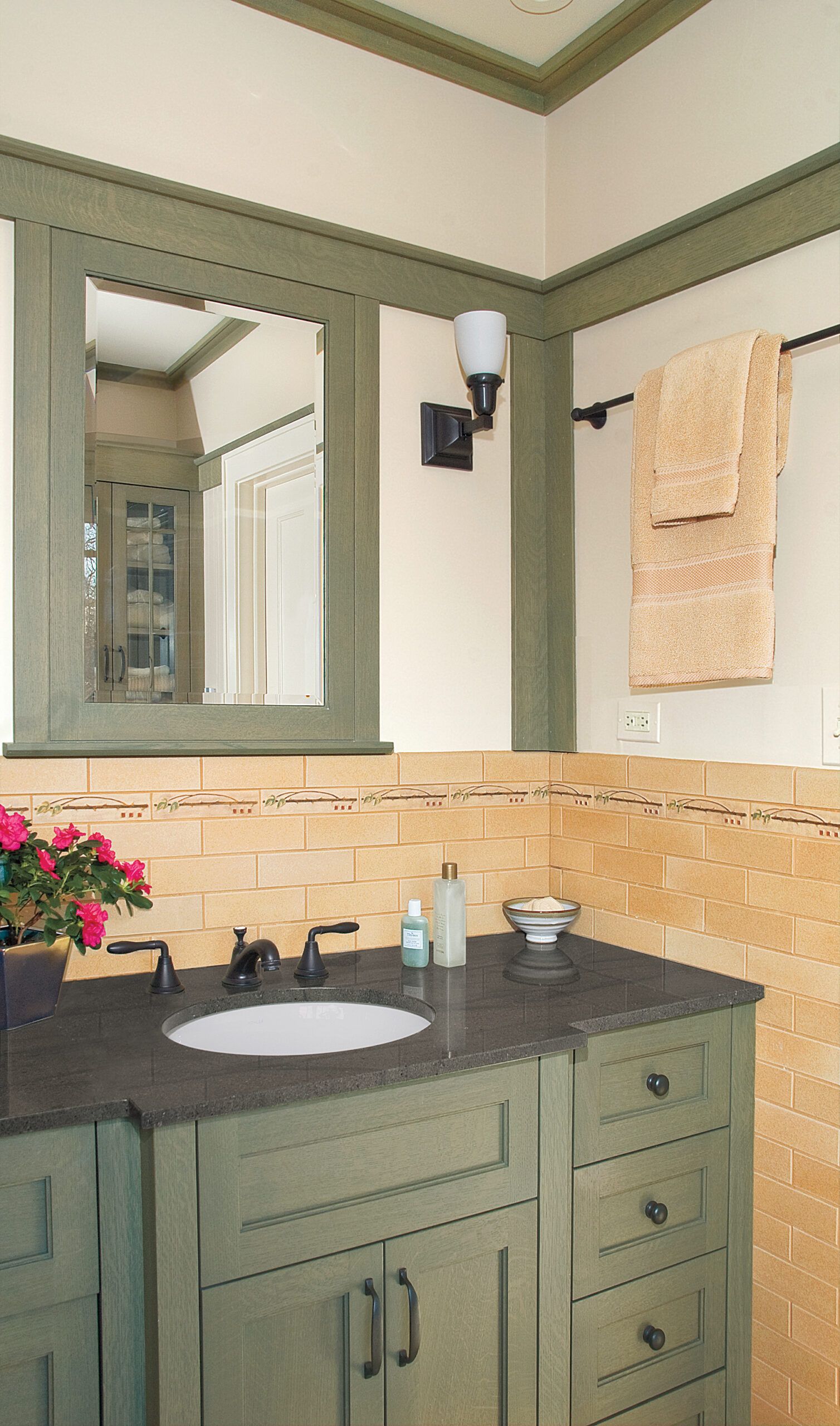
A vanity with an integrated sink offers the most storage and counter space, making it ideal for busy family bathrooms or master suites. It provides ample storage—up to 15 cubic feet in a 30-inch vanity—and generous counter space for toiletries and decor, with various styles and configurations available. However, it does require more floor space and may limit layout options in smaller bathrooms.
When selecting a vanity, make sure there’s enough clearance to open cabinet doors and drawers comfortably. Choose soft-close hinges for a quieter, more refined experience, and explore features like built-in power outlets and USB ports for added convenience.
Choosing Countertop Materials
Choosing the right countertop material is essential for your bathroom’s functionality and style. Here’s a guide to some of the most popular choices.
Natural Stone
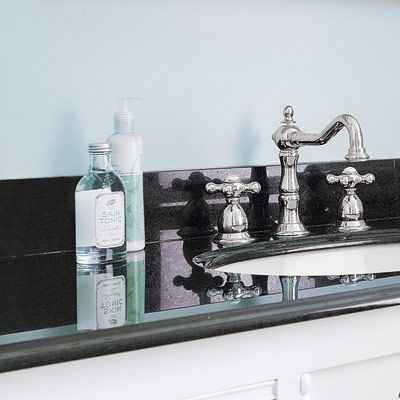
Natural stone offers a great option for upscale bathrooms, especially for discerning homeowners who appreciate natural, unique beauty. Each slab boasts its own distinctive look, making your bathroom truly one-of-a-kind. Homeowners can pair natural stone with undermount sinks, and polished granite resists stains and scratches. However, regular sealing is required to maintain its appearance. Porous types like marble and limestone tend to stain and etch if not properly cared for, and honed surfaces may display water and oil marks more easily.
RELATED: How to Replace a Bathroom Vanity
Resin-Based
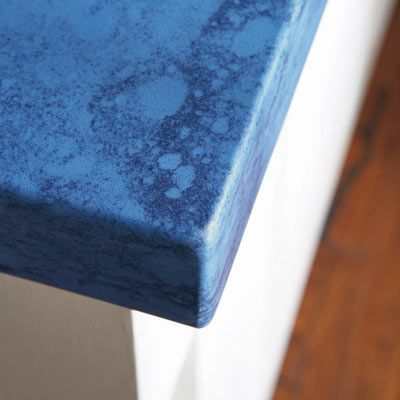
Resin-based countertops work ideally for bathrooms with unique shapes or dimensions, as manufacturers can mold them into a single, seamless piece that often includes the sink. These countertops offer various colors, need no sealing, and resist stains and scratches. However, they may lack the luxurious feel of natural stone, and excessive heat can damage them.
Laminate
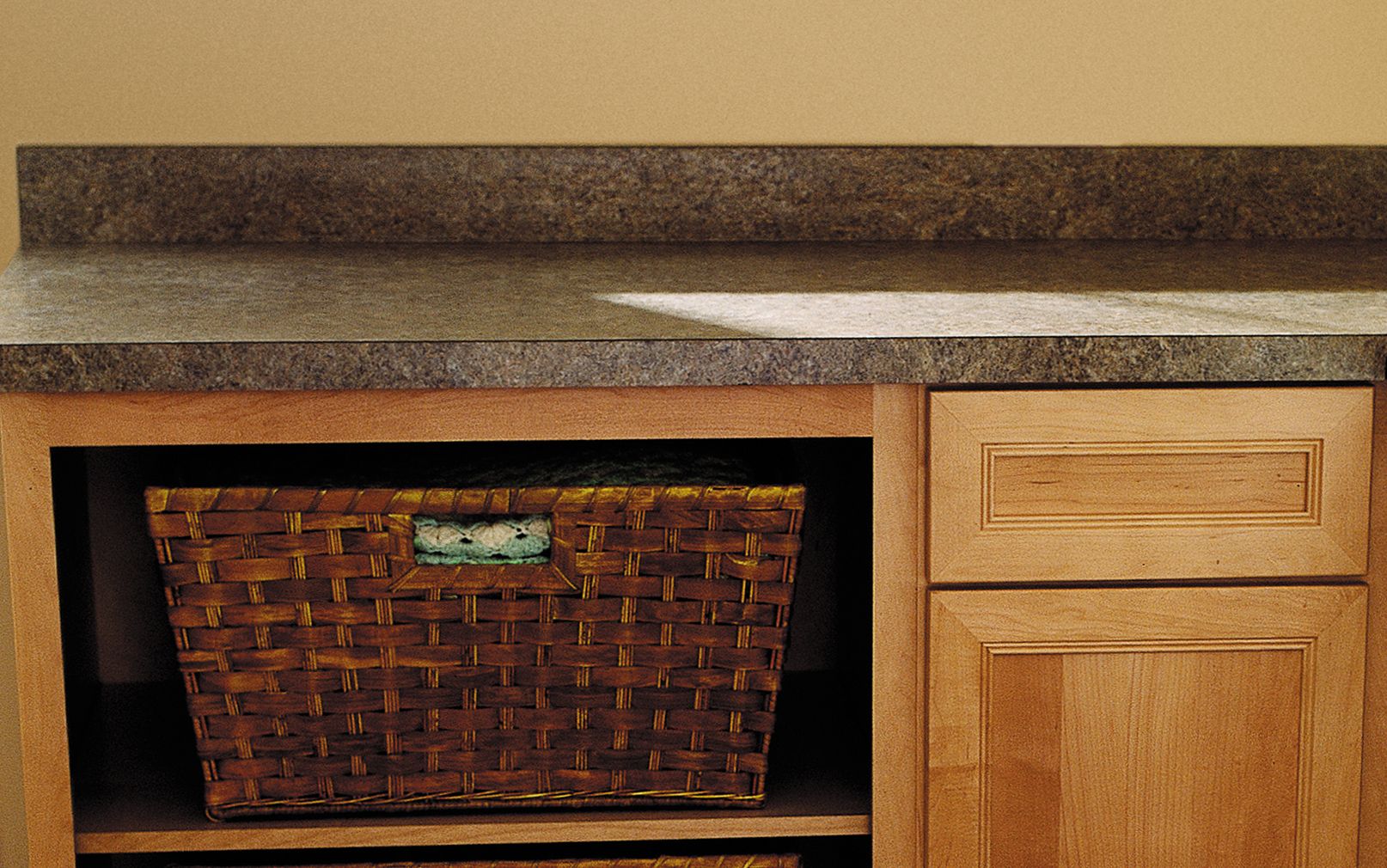
Laminate countertops are an excellent choice for homeowners with tight budgets or short project timelines. They are affordable, widely available in prefab slabs at home centers, and resist stains and scratches. Laminate comes in various colors, finishes, and textures, making it easy to match any design style. However, they may delaminate over time, have a less upscale appearance, and cannot accommodate undermount sinks.
RELATED: How to Build a Laminate Counter
How To Choose Grout
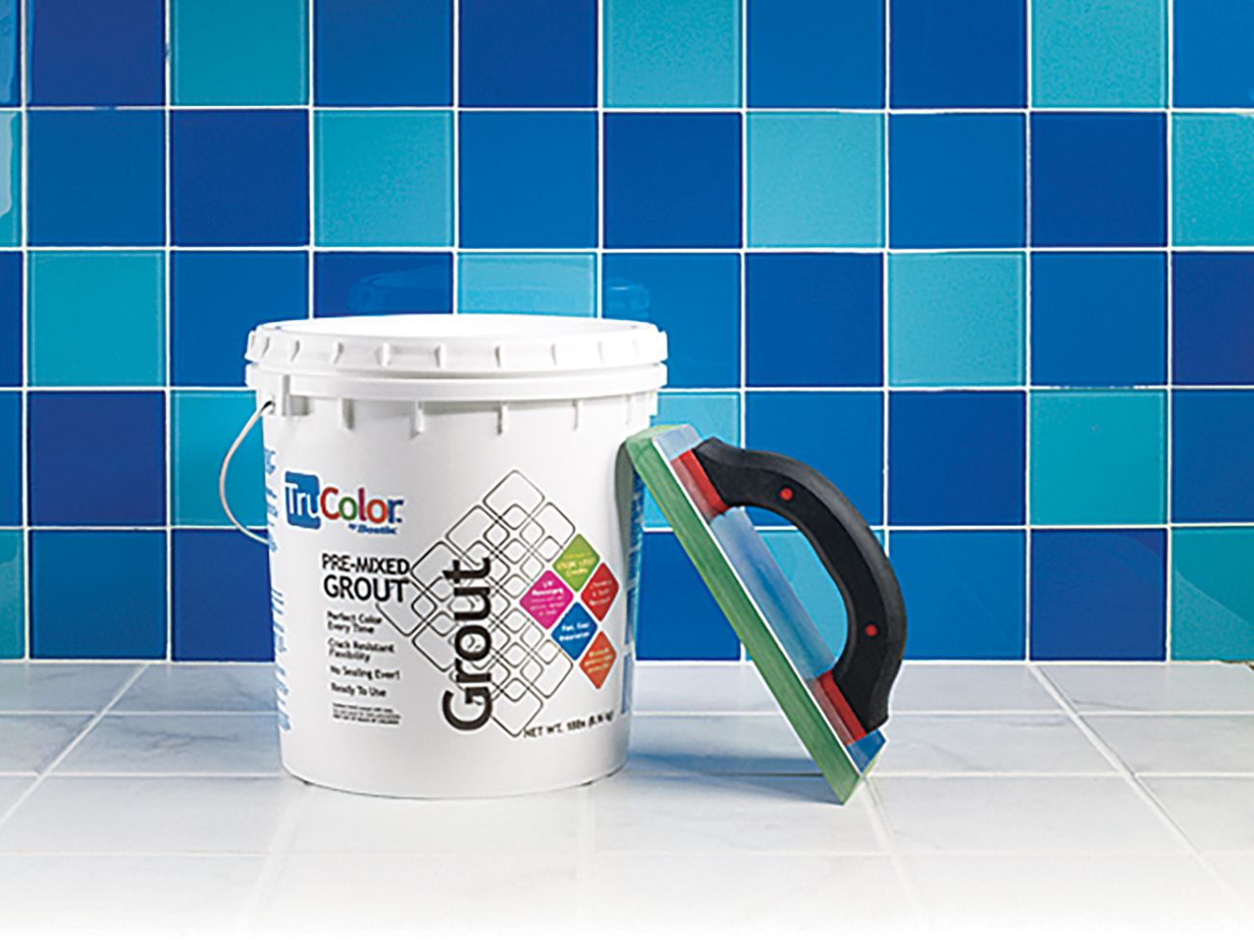
Grout helps maintain the appearance and integrity of your tile work. Keep these factors in mind when selecting grout:
- Color: Choose a grout color that complements your tile. Contrasting colors can highlight tile patterns while matching colors create a more seamless look.
- Type: Cement-based grout is common and affordable but requires sealing. Epoxy grout is more expensive but highly durable and stain-resistant.
- Width: The width of your grout lines affects both aesthetics and maintenance. Wider lines are easier to clean but more noticeable, while narrower lines create a sleeker look but can be harder to maintain.
- Additives: Use grouts with added sealants or antimicrobial properties for easier maintenance and enhanced longevity.
Lighting Considerations
Proper lighting is essential for creating a functional and inviting bathroom space. Here is a breakdown of several lighting options for your bathroom:
- Accent lighting: Use LED strips or small spotlights to highlight architectural features or create a relaxing atmosphere.
- Ambient lighting: Install ceiling-mounted fixtures or recessed lights to provide overall illumination.
- Natural light: Incorporate windows or skylights to bring in natural light and improve ventilation.
- Task lighting: Place sconces or vanity lights around mirrors to eliminate shadows and provide even lighting for grooming tasks.
Pairing different lighting types can help you achieve a well-balanced and aesthetically pleasing environment. Install dimmer switches for added control over the lighting intensity, allowing you to create various moods for different occasions.
Ventilation Solutions
The effectiveness of your ventilation solution can significantly impact the longevity and comfort of your bathroom. We recommend selecting one of the following options for proper bathroom ventilation:
- Dehumidifier: Add a small dehumidifier to control moisture levels in particularly damp environments.
- Exhaust fan: Install an appropriately sized exhaust fan to remove excess moisture and odors. Make sure that your exhaust fan is vented to the outside and not just into an attic or crawl space, which can lead to further moisture problems.
- Window: Include an operational window for natural ventilation.
